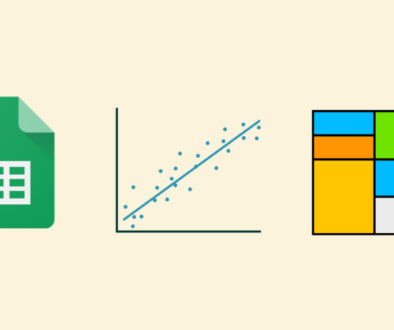How to Use Content Marketing Analytics to Improve Marketing
Make your content marketing more effective with the right analytics. Tracking key metrics can help you engage your audience, improve results, and drive growth.
What Is Content Marketing Analytics?
Content marketing analytics tracks and measures how well your content performs. It shows how people interact with things like blog posts, social media updates, videos, or emails. You can identify what your audience engages with, what drives traffic, and what ultimately converts visitors into leads or customers.
You can answer questions like these by using content analytics:
- Which types of content are most popular with my audience?
- Are readers completing my guides or leaving halfway through?
- What content contributes most to achieving my business objectives, like generating leads?
Content marketing analytics helps improve your strategy by ensuring every piece you create serves a purpose and delivers measurable results.
Why Is Content Analytics Important?
Content analytics helps you understand how well your content works.
Track Your Goals
Are you creating content to drive sales, build brand awareness, or generate leads? Analytics lets you measure progress and adjust your strategy to hit your targets.
Get to Know Your Audience
You’ll understand what topics, formats, and channels engage your audience the most. With this knowledge, you can create content that is more relevant and appealing to them.
Make the Best Use of Your Resources
Creating content takes time and effort. Marketing data shows which pieces perform well, so you can focus your time and budget on what brings the best results.
Improve Your Content Strategy
If something isn’t working, analytics can tell you why. Regularly checking your data helps you make smart changes to get better results.
Spot Trends and Opportunities
Analytics can highlight trends, giving you ideas for fresh content. If a certain topic or format is getting traction, you can jump on it and create more content around it.
Key Metrics to Measure in Content Marketing
To measure the success of your content marketing strategy, it’s important to focus on the right data. Let’s start with metrics that show how well your content is reaching its audience:
1. Traffic Metrics
These metrics tell you how many people are finding and visiting your content.
- Total Traffic: This measures the number of visitors to your content, helping you understand how well it’s attracting an audience.
- Traffic Sources: Tracks where your visitors are coming from, like organic search, social media, referrals, etc. Knowing this helps you figure out which channels are most effective at getting your content in front of people.
2. Engagement Metrics
Engagement metrics reveal how much your audience is interacting with your content:
- Time on Page: Tracks how long people stay on your content. If visitors spend more time, it’s a positive sign they find your content captivating and useful.
- Bounce Rate: Measures the percentage of visitors who leave your page without exploring further. A lower bounce rate means your content is holding their attention.
- Scroll Depth: Shows how far people scroll down your page. If most visitors aren’t reaching the end, it might mean your content isn’t fully engaging.
- Click-Through Rate (CTR): Tracks the percentage of visitors who click on links or calls-to-action (CTAs). A higher CTR means your content inspires readers to take the next step.
3. Conversion Metrics
Conversion metrics tell you how well your content inspires action:
- Conversion Rate: This measures the percentage of visitors who take a specific action, like subscribing to your newsletter or making a purchase. A higher conversion rate means your content is effectively guiding visitors to the next step.
- Lead Generation: Tracks how many new leads are generated from your content. It’s especially important for content focused on building an email list or collecting contact information.
4. Retention Metrics
Retention metrics tell you how well your content keeps visitors coming back for more.
- Return Visits: This tracks how often visitors return to your content over time. If you see a lot of return visits, it’s a good sign that your content provides real value and keeps people interested.
- Social Shares & Mentions: Measures how often your content is shared or mentioned on social media. Content that’s widely shared suggests it resonates with your audience and helps build long-term relationships.

Common Pitfalls to Avoid
When tracking and analysing content marketing data, it’s actually easy to make mistakes. Here’s what to watch out for:
Focusing only on vanity metrics
While metrics such as social media likes and followers may appear impressive, they may not provide a complete picture. While they show surface-level engagement, they might not reveal how well your content is driving actions like clicks, sign-ups, or sales.
Avoid this by defining your key goals (e.g., lead generation, sales, brand awareness), and making sure the metrics you track align with those.
Overcomplicating analytics
Analytics can become overwhelming when there’s too much data to process. Trying to track everything at once can confuse you and dilute the value of the insights you gather.
Focus on the most important metrics and avoid getting caught up in every detail. Keeping your analysis simple and targeted makes it easier to act on the insights you gather.

Ignoring the Full Funnel
Many content marketers focus only on top-of-funnel (TOFU) metrics, such as awareness and traffic. While important, these metrics don’t capture the full customer journey. Metrics from the middle (MOFU) and bottom (BOFU) of the funnel are equally important.
To avoid this, track performance at each stage of the funnel. For example, monitor MOFU metrics like time on page and email sign-ups to see how well your content is nurturing leads. At the BOFU stage, measure conversions to ensure your content drives action. This full-funnel approach gives you a clearer picture of how content supports your marketing goals.
Not Segmenting Your Audience
Assuming all audience members respond to your content the same way can lead to missed opportunities. Different groups engage with content differently based on factors like age, location, and interests. Ignoring these differences makes it harder to create content that resonates.
To avoid this, segment your data based on audience characteristics. This will help you tailor your content to meet the specific needs of each group
Not Testing and Experimenting
Assuming you know what works without testing can limit your growth. Content marketing thrives on trial and error, and not experimenting with new ideas can lead to stagnation.
Regularly test different content formats, topics, and distribution channels. A/B testing is a fantastic way to compare variations and determine which performs best. Then you can refine your content and improve your overall marketing performance over time.
Use Analytics to Improve Your Strategy
To get the best results from your content marketing, use analytics to guide your improvements. You can identify what’s working and where your content needs tweaking by focusing on the right metrics. For example, if you have a high bounce rate, it could mean your headlines or content relevance need adjusting. If you’re seeing strong engagement but low conversions, try making your calls to action clearer or more persuasive.
Continually reviewing your data helps you make informed decisions and tweak your strategy to better connect with your audience, leading to more successful content and better overall performance.
